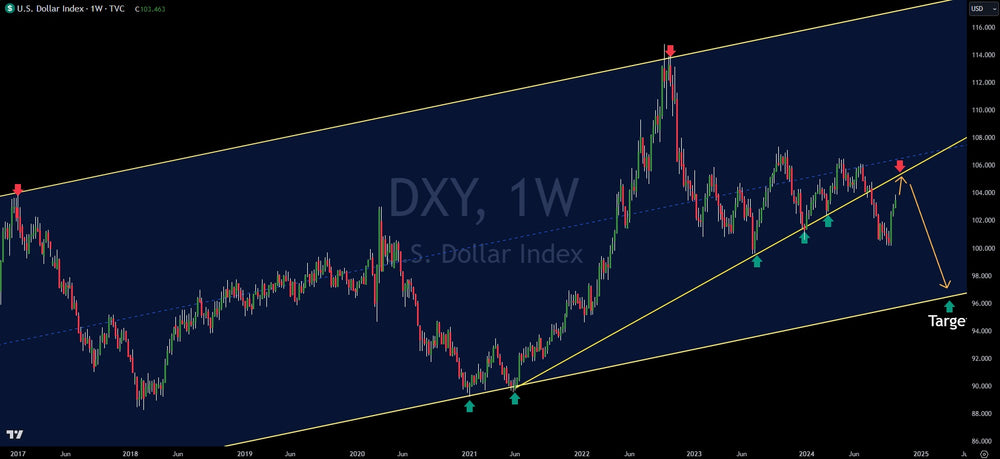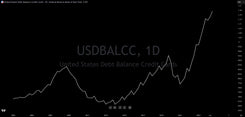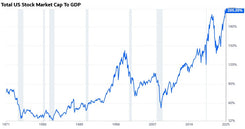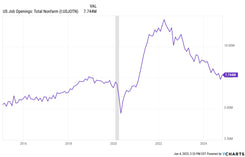The Growing Risks To The U.S. Dollars Superiority With Chart Analysis

The U.S. Dollar has seen a recent bounce after breaking key support. However, that bounce is nearing a retrace to the 'scene of the crime' (the former breakdown line). Overall, technical analysis signals that once tagged, the downside is highly probable, with a downside near-term target of $97 on the DXY.
As the below discusses, over the next decade or two, the Dollar will likely go lower. Let's take an in-depth look at the growing risks.
While the US dollar remains the dominant global reserve currency, its position is being challenged. Here's a breakdown of the factors contributing to this decline:
1. Erosion of Trust and Confidence
- Fiscal Irresponsibility: The US has a growing national debt and persistent budget deficits. This raises concerns about the long-term stability of the US economy and the value of the dollar.
- Political Polarization and Governance Issues: Political gridlock and frequent debt ceiling debates create uncertainty and can damage confidence in the US government's ability to manage its finances.
- Weaponization of the Dollar: The use of sanctions and the freezing of assets by the US has led some countries to seek alternatives to reduce their reliance on the dollar and vulnerability to US policies.
2. Competition from Other Currencies
- Rise of the Euro and Chinese Yuan: The euro is a strong contender as a reserve currency, and the Chinese government is actively promoting the internationalization of the yuan.
- Currency Diversification: Central banks are increasingly diversifying their foreign exchange reserves, reducing their reliance on any single currency, including the dollar.
3. Shifting Economic Landscape
- Decline in US Economic Dominance: The US share of global GDP has been declining, while emerging markets, particularly China, have grown in importance.
- Rise of Regional Trading Blocs: The formation of regional trade agreements and the use of local currencies in bilateral trade can reduce the demand for dollars.
- Technological Advancements: The development of new financial technologies and digital currencies could potentially disrupt the traditional global financial system and challenge the dollar's dominance.
4. Commodity Price Fluctuations
- Negative Correlation: Historically, the dollar has had a negative correlation with commodity prices. Rising commodity prices, especially for oil, can put downward pressure on the dollar.
5. Changes in Global Capital Flows
- Reduced Foreign Investment: If foreign investors become less attracted to US assets, demand for the dollar could decrease.
Important Note: While these factors point to a potential decline in the dollar's dominance, it's important to remember that it still enjoys significant advantages:
- Deep and Liquid Markets: The US has the largest and most liquid financial markets in the world.
- Strong Institutional Framework: The US has a stable legal and regulatory environment, which supports confidence in its financial system.
- Network Effects: The widespread use of the dollar in international trade and finance creates a self-reinforcing network effect.
6. The Rise of Cryptocurrencies, Particularly Bitcoin
- Decentralized Alternative: Bitcoin, with its decentralized nature and finite supply, is seen by some as a hedge against inflation and a potential alternative to traditional currencies.
- Growing Adoption: Increased institutional adoption and mainstream acceptance of Bitcoin could further challenge the dollar's dominance.
- Technological Innovation: Advancements in blockchain technology and the development of new cryptocurrencies with improved functionalities could further accelerate this trend.
7. Central Banks Accumulating Gold
- Hedge against Uncertainty: Central banks around the world are increasing their gold reserves, signaling a lack of confidence in the current global monetary system and a desire to diversify their assets.
- Safe Haven Asset: Gold is traditionally viewed as a safe haven asset during times of economic and geopolitical uncertainty. The increased demand for gold could put downward pressure on the dollar.
- Potential for a Gold-Backed Currency: While unlikely in the near future, some countries might consider backing their currencies with gold or a basket of commodities, which could further challenge the dollar's role.
Integrating these factors into the overall picture:
The rise of cryptocurrencies and central banks' accumulation of gold further contribute to the erosion of the dollar's dominance. These trends reflect a growing desire for diversification and a search for alternatives to the traditional financial system.
While the dollar's position is not in immediate jeopardy, these factors, combined with the others previously mentioned, suggest a gradual shift towards a more multipolar currency system where the dollar plays a less dominant role.
Trading involves substantial risk. All content is for educational purposes only and should not be considered financial advice or recommendations to buy or sell any asset. Read full terms of service.




